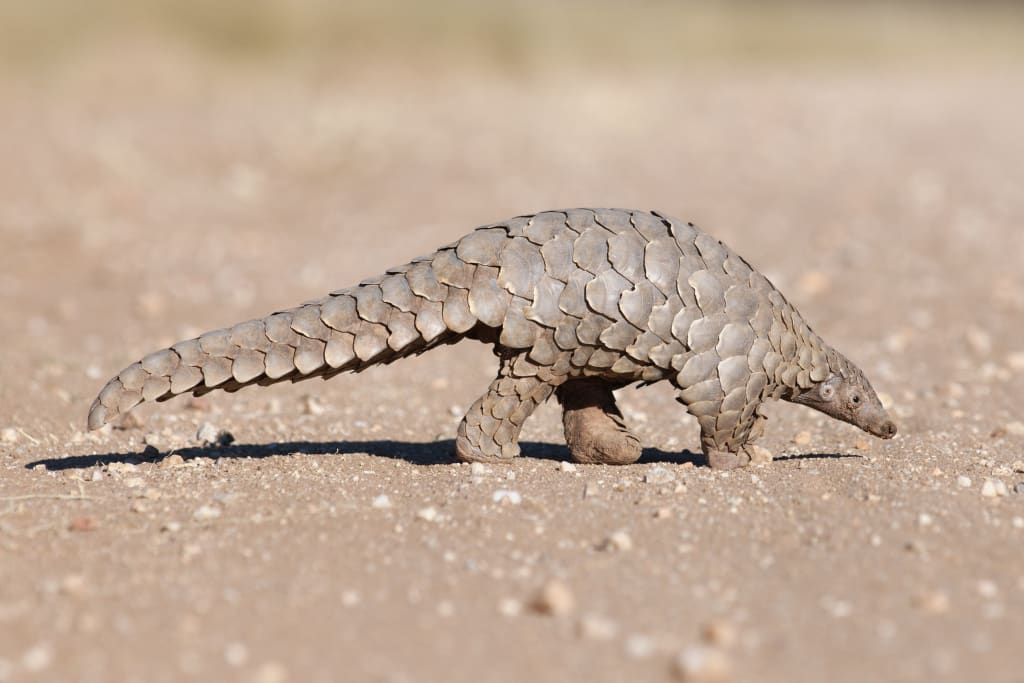Pangolin: the most trafficked mammal in the world
The pangolin is one of the most fascinating and enigmatic creatures on Earth. Known for their distinctive appearance and unique behaviors, pangolins have captured the interest of scientists and nature enthusiasts alike. However, these remarkable animals are also among the most trafficked in the world, facing severe threats to their survival. This article will delve into the biology, habitat, and conservation challenges of the pangolin, explaining why these animals are often unsafe in close proximity to one another and to humans.

What is a Pangolin?
Pangolins, often referred to as "scaly anteaters," are mammals belonging to the order Pholidota. There are eight species of pangolins, divided between Africa and Asia. These species are:
1. **Chinese Pangolin (Manis pentadactyla)**
2. **Indian Pangolin (Manis crassicaudata)**
3. **Sunda Pangolin (Manis javanica)**
4. **Philippine Pangolin (Manis culionensis)**
5. **Ground Pangolin (Smutsia temminckii)**
6. **White-Bellied Pangolin (Phataginus tricuspis)**
7. **Black-Bellied Pangolin (Phataginus tetradactyla)**
8. **Giant Pangolin (Smutsia gigantea)**
Physical Characteristics
Pangolins are easily recognizable by their unique armor of large, overlapping scales, which are made of keratin—the same material found in human hair and nails. These scales provide protection against predators. When threatened, a pangolin can roll into a tight ball, making it nearly impossible for predators to penetrate their defenses.
Pangolins have elongated bodies, ranging from 30 to 100 centimeters in length, depending on the species. They possess strong, curved claws that are perfectly adapted for digging into termite mounds and ant nests, which are their primary food sources. Pangolins also have long, sticky tongues that can extend to over 40 centimeters, allowing them to reach deep into insect nests.
Behavior and Diet
Pangolins are nocturnal and solitary animals. They spend their nights foraging for ants and termites, using their keen sense of smell to locate their prey. Their diet is highly specialized, and they play a crucial role in controlling insect populations.
These animals are also known for their burrowing behavior. Ground-dwelling species create extensive burrow systems, which they use for shelter and to raise their young. Arboreal species, on the other hand, are adept climbers and often take refuge in trees.
Habitat and Distribution
Pangolins are found in a variety of habitats across Africa and Asia, including tropical forests, savannas, and grasslands. Each species has a specific range:
1. **Chinese Pangolin**: Found in parts of China, Nepal, Bhutan, and northern India.
2. **Indian Pangolin**: Inhabits the Indian subcontinent, including parts of India, Sri Lanka, Nepal, and Bangladesh.
3. **Sunda Pangolin**: Distributed across Southeast Asia, including Thailand, Malaysia, Indonesia, and Vietnam.
4. **Philippine Pangolin**: Endemic to the Palawan province in the Philippines.
5. **Ground Pangolin**: Found in southern and eastern Africa, including countries like South Africa, Namibia, Botswana, and Zimbabwe.
6. **White-Bellied Pangolin**: Ranges across West and Central Africa, from Guinea to Uganda.
7. **Black-Bellied Pangolin**: Found in West and Central African rainforests.
8. **Giant Pangolin**: Inhabits the forests and savannas of central Africa, including countries like Uganda, Tanzania, and the Democratic Republic of the Congo.
Environmental Preferences
Pangolins prefer habitats that offer abundant food sources and suitable shelter. They are adaptable to different environments but are most commonly found in areas with dense vegetation and plenty of insects. Their burrows and dens are typically located in areas that provide safety from predators and human activity.
Conservation Status
Pangolins are facing a severe conservation crisis. All eight species are listed on the International Union for Conservation of Nature (IUCN) Red List of Threatened Species, with statuses ranging from Vulnerable to Critically Endangered. The primary threats to pangolins are poaching and habitat destruction.
Poaching and Illegal Trade
Pangolins are the most trafficked mammals in the world. They are hunted for their meat, considered a delicacy in some cultures, and their scales, which are used in traditional medicine despite the lack of scientific evidence supporting their efficacy. The illegal trade of pangolins is driven by high demand in parts of Asia, particularly China and Vietnam.
Habitat Destruction
Deforestation and land development are major threats to pangolin habitats. As forests are cleared for agriculture, logging, and urbanization, pangolins lose their natural homes and food sources, making them more vulnerable to poaching and other dangers.
Conservation Efforts
Various conservation organizations and governments are working to protect pangolins through anti-poaching measures, habitat protection, and public awareness campaigns. International trade of all pangolin species is banned under the Convention on International Trade in Endangered Species of Wild Fauna and Flora (CITES).
Why Pangolins Are Not Safe to Stay Together
While pangolins are remarkable creatures, their solitary nature and specific behaviors make it challenging for them to coexist closely with one another and with humans. Here are some reasons why pangolins are not safe to stay together:
Solitary Behavior
Pangolins are inherently solitary animals, only coming together for mating or when a mother is raising her young. They are territorial and can become aggressive if another pangolin encroaches on their space. Keeping pangolins together in captivity or in close quarters can lead to stress, fighting, and injury.
Stress and Health Issues
Pangolins are highly sensitive to stress. Changes in their environment, close proximity to other pangolins, or human interaction can cause significant stress, leading to health issues. Stress can weaken their immune systems, making them more susceptible to diseases and reducing their chances of survival.
Disease Transmission
In close quarters, the risk of disease transmission increases. Pangolins, like other animals, can carry pathogens that may spread rapidly if they are kept together. This is particularly concerning in captive environments, where veterinary care may not always be adequate to manage outbreaks.
Specialized Diet
Pangolins have a very specialized diet consisting primarily of ants and termites. In captivity, replicating this diet is challenging, and competition for food among multiple pangolins can lead to malnutrition and starvation. Ensuring that each pangolin receives adequate nutrition is difficult when they are kept together.
Captive Breeding Challenges
Breeding pangolins in captivity is notoriously difficult. Their specific dietary and environmental needs, coupled with their solitary nature, make it challenging to create suitable breeding conditions. Attempts to breed pangolins in captivity often result in high mortality rates and limited success.
Conservation and Ethical Considerations
From a conservation perspective, it is crucial to prioritize the well-being of individual animals and avoid practices that cause undue stress or harm. Efforts to conserve pangolins should focus on protecting their natural habitats, curbing illegal trade, and fostering conditions that allow them to thrive in the wild rather than in captivity.
Conclusion
Pangolins are extraordinary animals that play a vital role in their ecosystems by controlling insect populations. Despite their importance, they face critical threats from poaching and habitat destruction, making them some of the most endangered mammals on the planet.
Understanding the unique behaviors and needs of pangolins highlights why they are not safe to stay together, either in the wild or in captivity. Conservation efforts must prioritize habitat protection, anti-poaching measures, and public awareness to ensure the survival of these remarkable creatures.
By supporting conservation initiatives and advocating for stronger wildlife protection laws, we can help safeguard pangolins for future generations and preserve the delicate balance of our natural world.
About the Creator
Enjoyed the story? Support the Creator.
Subscribe for free to receive all their stories in your feed. You could also pledge your support or give them a one-off tip, letting them know you appreciate their work.






Comments
There are no comments for this story
Be the first to respond and start the conversation.